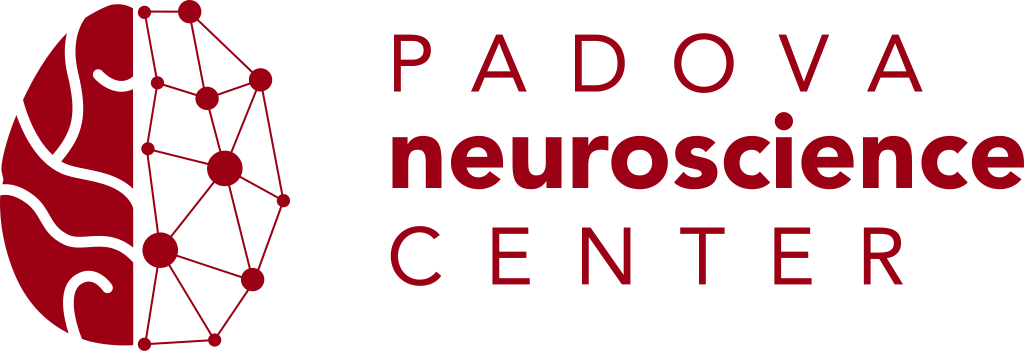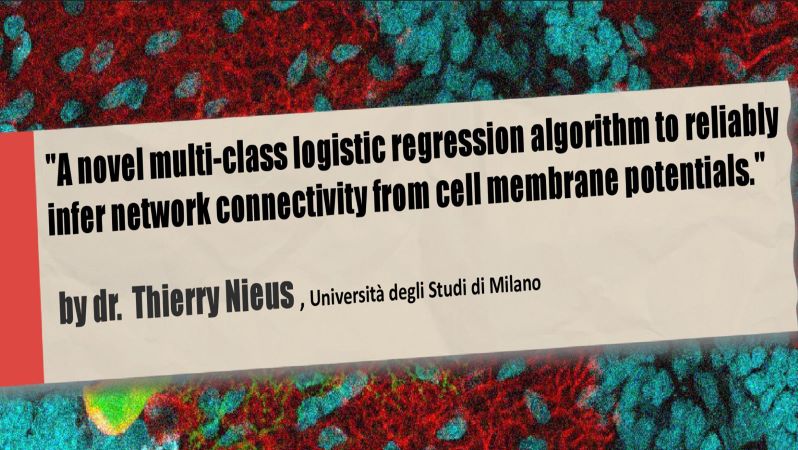by dr. Thierry Nieus, Università degli Studi di Milano
When: October 6th, 2022 – 2:30 pm
Where: Sala Seminari, VIMM. Recording available on Mediaspace
Abstract: In neuroscience, the structural connectivity matrix of synaptic weights between neurons is one of the critical factors determining the overall function of a network of neurons. The mechanisms of signal transduction have been intensively studied at different time and spatial scales and at both the cellular and molecular level. While a better understanding and knowledge of some basic processes of information handling by neurons has been achieved, little is known about the organization and function of complex neuronal networks. Experimental methods are now available to simultaneously monitor neural activities from a large number of sites in real time.
Here, we present a methodology to infer the connectivity of a population of neurons from their voltage traces.
At first, spikes and putative synaptic events are detected. Then, a multi-class logistic regression is used to fit the putative events to spiking activities. The fit is further constrained, by including a penalization term that regulates the sparseness of the inferred network. The proposed weighted Multi-Class Logistic Regression with L1 penalization (MCLRL) was benchmarked against data obtained from in silico network simulations.
MCLRL properly inferred the connectivity of all tested networks (up to 500 neurons), as indicated by the Matthew correlation coefficient (MCC), already with small samples of network activity (5 to 10 seconds). Then, we tested MCLRL against different conditions, that are of interest in concrete applications. First, MCLRL accomplished to reconstruct the connectivity among subgroups of neurons randomly sampled from the network. Second, the robustness of MCLRL to noise was assessed and the performances remained high (0.95) even in extremely high noise conditions (95% noisy synaptic events). Third, we devised a data driven procedure to gather a proxy of the optimal penalization term, thus envisioning the application of MCLRL to experimental data. The proposed approach is ideally suited for populations recordings, where spikes and post-synaptic recordings can simultaneously be recorded (e.g. genetic encoded voltage indicators). Yet, the main message here is that a small fraction (5%) of genuine synaptic events is sufficient to properly infer the underlying connectivity of a network.
Short bio: Thierry Nieus earned a PhD in Applied Mathematics in 2004 working on computational models of neuronal cells. During his PhD he spent a period abroad in Belgium and France collaborating at the EU projects Cerebellum and Spikeforce. He used information theory tools to quantify the processing of the inputs by in silico and experimentally recorded neural cells. At the fall of 2006, he moved to the Italian Institute of Technology (IIT) working on detailed models of synaptic dynamics. At the IIT he also started working on designing data analysis pipelines to process large scale recordings of brain tissues gathered with cutting-edge technologies. During his stay at the IIT he has acquired a good knowledge of the cellular and sub-cellular processes determining neuron’s activities, of the mathematical and computational approaches used for modeling and of the machine learning, graph theory and information theory tools to investigate the underlying computation. In 2016, he moved to the iTCF laboratory headed by Marcello Massimini (Università degli Studi di Milano – Italy) working on entropy based measures to quantify the complexity of brain signals in humans. He also brought these measures to cell culture networks, cerebellar brain slices and computational models. He has a longstanding experience in teaching computational neuroscience, computer programming and data analysis tools to undergraduate and PhD students. He also supervised the research activity of 4 PhD students. At the fall of 2021, he moved to the HPC Indaco Unitech (Università degli Studi di Milano – Italy), where he is involved in teaching the basics of HPC as well as in data science and neuroscience projects with private companies and research groups.


